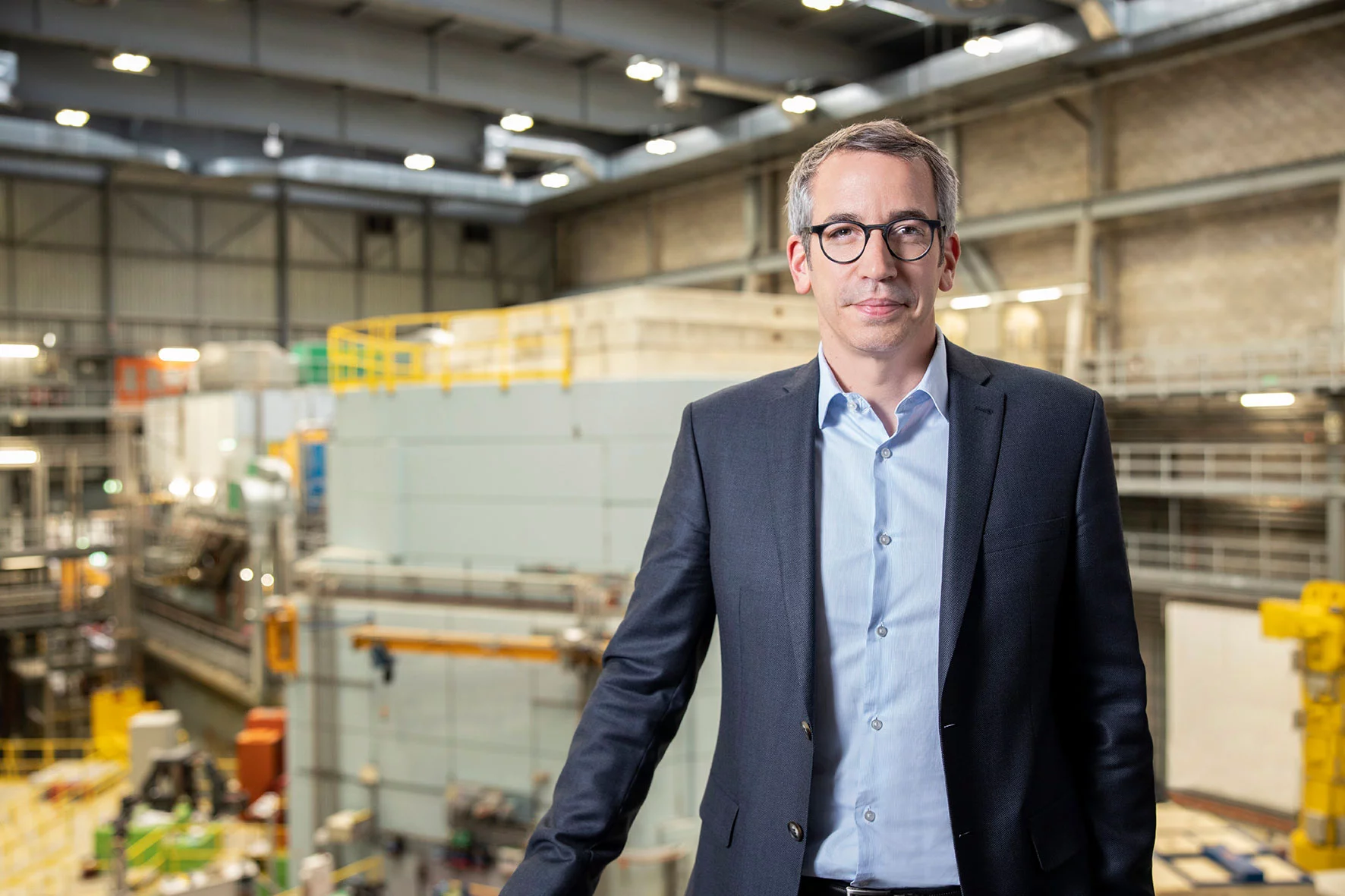Radionuclides open up new, highly efficient options for treating cancer. Christian Rüegg, head of the Research with Neutrons and Muons Division at the Paul Scherrer Institute PSI, explains what role the Swiss Spallation Neutron Source SINQ at PSI is playing in the development of a suitable drug.
Mr. Rüegg, the neutron source SINQ is better known for enabling researchers to examine things non-destructively with the neutrons it produces. That it also is used to produce cancer medicines sounds surprising.
That's true. SINQ is better known for its applications in solid-state physics, magnetism, chemistry, and biology. Every year we have 1,000 visiting researchers here, and 400 experiments are carried out. In all, 15 instruments are arranged around the neutron source. With them you can do not only outstanding fundamental physics research, but also applied research, for instance examining art objects. The radionuclides, however, are generated right inside the neutron source. That, by the way, does not disturb the rest of the experiments. This means that production can run around the clock when the facility is in operation.
Worldwide, are there many facilities in which radionuclides for medicine can be produced?
Most research neutron sources were built for experiments in fundamental physics. By contrast, SINQ was constructed from the start in such a way that it could also be used to produce radionuclides. In Canada, an old research reactor in Chalk River produced a large share of the quantity needed in North America. It was kept in operation longer than planned because production was so important for medical treatment. In 2018, though, it was shut down after 61 years of operation. The demand is still great, because radionuclides open up new, highly efficient options for cancer treatment. Therefore there are good reasons to set up the means to produce them. In Australia, one research reactor was built in such a way that half of its operating capacity can be devoted to scattering experiments for fundamental research, and half to the production of radionuclides for medical applications. In Argentina, too, a facility is being developed with the same goal.
What is the advantage of SINQ?
Not only do we have the neutron source, but we can also carry out all the other procedures for developing a drug right here in one place. The production of radionuclides is just the first step. Then the radionuclides must be extracted, and for that you need radiochemistry. Then the radionuclide must be bound to a molecule that ensures the radioactive cargo will get to the right place – to the tumour cells. This is an especially difficult task. We have outstanding experts here at PSI for every step of the process. SINQ, as the starting point for all further steps, gives us the unique possibility to carry out the entire research process on-site.
Does the neutron source at PSI also have disadvantages?
We can use SINQ to produce new radionuclides, develop novel methods, and test their feasibility. But we can only produce test quantities of radionuclides. Larger-scale, regular production for practical use with patients is thus hardly possible. But this is not necessary, because there are research reactors built especially for the purpose, for example in South Africa, and also at the European Institute Laue-Langevin (ILL) in Grenoble. There it is possible to introduce samples into the middle of the research reactor, where the highest neutron density prevails. That enables production of the quantities needed for large clinical trials or for therapies.
Is there collaboration with ILL in Grenoble?
Switzerland participates as a scientific member in the operation of ILL. We are already getting samples made in Grenoble. Now we want to intensify this collaboration. Together with ILL, we would like to optimise production and set up an automated transport system for the material to be irradiated, like the one we have developed at SINQ. Then our colleagues in Grenoble can profit from our experience. This is also beneficial for Switzerland, since it should ensure still more efficient and regular production of sufficient quantities of terbium-161. Then, in Switzerland as well as elsewhere, it should be possible to carry out more extensive studies than have been feasible up to now with the quantities we can deliver.
What is the future of SINQ?
At the moment we are equipping the spallation source with new neutron guides, which is why the facility has been idle since the beginning of the year. SINQ is already more than 20 years old. When it was built, the best optical elements available were used. In the meantime, though, these have been developed further. Therefore we are modernising the neutron optics, which guide the neutrons from the source to the instruments, as well as several of the instruments. For the production of radionuclides, which takes place right in the middle of the source, nothing will change. In May 2020, we want to put SINQ back in operation, after which we hope it will successfully remain available for another 20 years for experiments in basic and materials research, while also producing radionuclides for medical research.
Text: Barbara Vonarburg
Contact
Prof. Dr. Christian Rüegg
Research with Neutrons and Muons
Paul Scherrer Institute, Forschungsstrasse 111, 5232 Villigen PSI, Switzerland
Telephone: +41 56 310 47 78, e-mail: christian.rueegg@psi.ch [German, English]

